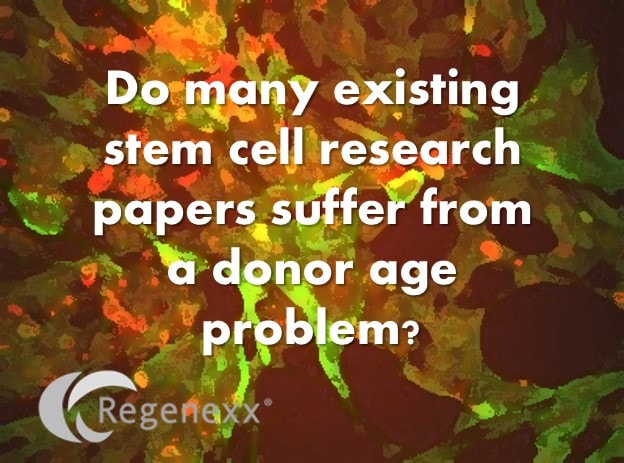Are Many Lab Based Stem Cell Research Studies Invalid?
One of the stem cell research groups that I run is a non-profit involved with in-vitro lab experiments that require donor cells. What I recently learned about the details of how stem cells are routinely procured by universities for research was very disturbing and may invalidate many of the published lab experiments that we all rely on everyday. Turns out that while the patients whose diseases stem cells might treat are generally older, major tissue banks that sell cells for research have a hard time getting anything but young student donors. This is a serious problem.
The story begins with our clinic volunteering to donate the older stem cells needed for the experiment. In a meeting I had with the lead scientist performing the stem cell experiments, he was attracted to an advertisement from a large university based tissue bank. The experiment required MSCs that were older, as the point was determining if certain young tissues made old cells act like young cells. He showed me the brochures from the university touting that they followed International guidelines for tissue procurement and could get him cells to order. I was pretty impressed, so I authorized him to use the non-profit’s money to buy cells. Then reality set in…
Here’s the e-mail he got from one of the largest university tissue banks on earth:
“Hi Dustin,
We can send you a vial of the 47 yr old female, Passage 1 cells. The oldest male we have available is 28.6 yr old. However, there are only Passage 2 cells available form this donor. The oldest male for which we have Passage 1 cells is 22 yr old.
Regarding the MSCs from older donors, the first thing that stands out is that they grow very slowly to the point that by 2 weeks in culture we do not have enough Passage 0 cells to continue with expansions. With younger donors, the Passage 0 cells will reach 70-80% confluence (our harvest criteria) in 6 – 12 days.
Of the cells we are able to expand from older donors, their CFU numbers are very low and osteo differentiation is very poor. We test all cells through 3 passages, starting with a frozen vial of P1 cells. Because the cells we distribute are not immortalized and have a limited lifespan in culture, we only distribute those that maintain good morphology, population doublings, differentiation and CFUs through these 3 passages. Cells from the older donors, if they grow, usually do not make it beyond passage 2.
I hope this helps. Please let me know which male cells, if any, you would like to receive with the female cells.
Thank you and have a good weekend!
R–“
What’s being said? They don’t have any older cells, despite the fact that many MSC experiments would require older cells to mimic the age of stem cells that generally get disease. In addition, despite our many year experience routinely growing stem cells of older patients to passage 3-4 and many experiments by others showing that they have no issues differentiating, for some reason they can’t get their older cells to grow? This last bit sounds like an excuse for the real problem-this university tissue bank has an easy time getting students to donate cells, but a tough time finding older donors. Why is this a huge problem?
Stem cell number reduces with age. Thankfully we haven’t seen this cause clinical problems for most older patients. However, there are literally thousands of experiments published in the National Library of Medicine that claim to research the properties of human stem cells. While older stem cells are mostly like younger stem cells, there are differences. In addition, since older people get more disease in general than younger people, it’s critical that many of these experiments are performed with older stem cells to mimic the age at which disease occurs. However, based on this recent revelation, how many of these studies have been performed with younger donors because that’s all the university tissue bank had in stock? How many of these stem cell research experiments are likely invalid because they couldn’t get a hold of cells of the right chronological age?
The upshot? As of my reading of this e-mail from one of the largest university adult stem cell banks, I’m really concerned that some of the stem cell research that we all rely on is seriously flawed by a hidden tissue procurement problem. While many of these published lab experiments should have been performed with older stem cells mimicking disease, many likely used younger stem cells because that’s all the professors could get their hands on. Yikes! What can you do as a physician or researcher who depends on this published lab data? Read the fine print in the methods section of the paper to make sure that the cells are of the right age for the experiment and if that’s not listed, move onto another study!

NOTE: This blog post provides general information to help the reader better understand regenerative medicine, musculoskeletal health, and related subjects. All content provided in this blog, website, or any linked materials, including text, graphics, images, patient profiles, outcomes, and information, are not intended and should not be considered or used as a substitute for medical advice, diagnosis, or treatment. Please always consult with a professional and certified healthcare provider to discuss if a treatment is right for you.

